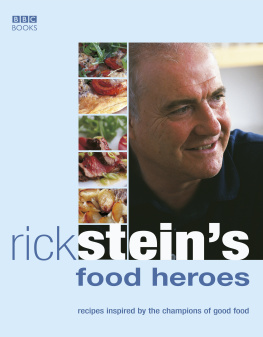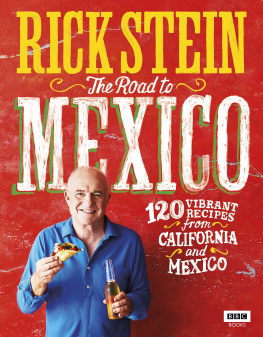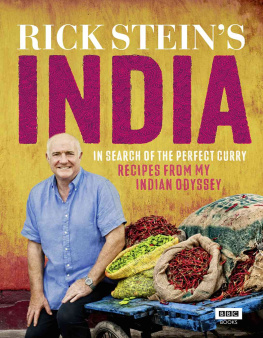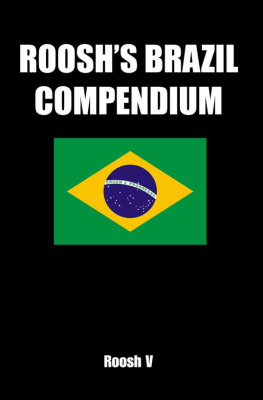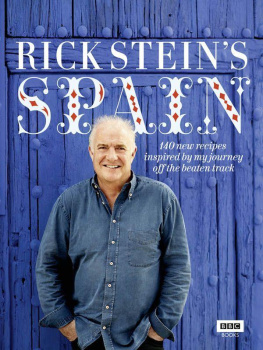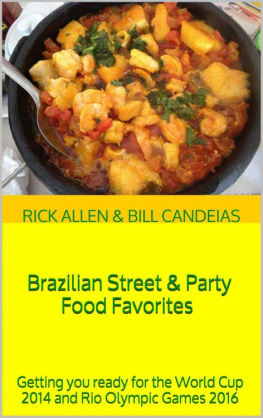
Photography by Rick Allen and Bill Candeias
Design, formatting and editing contribution by Carol Beech, Susan Hawkins and Lucas Elverud (New Zealand, Brazil and USA, respectively).
Acknowledgements to Senhora Licia Jones, United Kingdom; Senhora Nilza Oliveira Candeias, Espirito Santo, Brazil for their valuable help and guidance.
First Edition: Published September 2013
BRAZILIAN STREET & PARTY FOOD FAVORITES
Getting you ready for the World Cup 2014 and Rio Olympic Games 2016
By Rick Allen & Bill Candeias



Introduction
Rick Allen and Bill Candeias are both chefs who met in London, UK. Both chefs have a passion for cooking and regularly host and coordinate parties where they live in Esprito Santo, Brazil.

As with most Brazilians they have a passion for comida de rua which translates as street food. Furthermore, Brazilians love Carnival time, parties, football, beach volley ball and sports in general. With this in mind the boys thought it was a great idea to put together a book for the World Cup 2014 and Olympic Games 2016, both Convento da Penha, Vitria, Esprito Santo (est. 1652) events to be hosted in Brazil. This book focuses on street and party food that Brazilians would eat and celebrate during these great sporting events. And not forgetting Carnival.


With Brazil hosting the World Cup in 2014 and the Olympic Games in 2016, its an exciting time for Brazil. And it is about time the world got to know the delights of Brazilian food.



BRAZILIAN STREET FOOD

Street food is everywhere in Brazil, on most street corners and never far away.
Your everyday Brazilian food is so tasty and easy to make. You can see where the Italian, German, Japanese, Portuguese and African and Middle East influences come from, such as Kibe (pictured below).

One of the most common types of street food in Brazil is the pastel, which is Bills favorite (pictured being sold above). These delicious snacks are stuffed for all palates; including fillings such as minced beef, ham, bacalhau (salted cod), shrimp, chicken, cheese and even banana with cinnamon. All these great snacks, including Ricks favourite the Coxinha de Frango, (pictured below with a glass of sugar cane juice), and the others in Part 1 of this book you can use for snacks at parties during the FIFA World Cup and Olympic Games.

BRAZILIAN PARTY FOOD FOR ALL OCCASIONS
Part 2 (Party Dishes, ) of this book contains some great recipes which Brazilians use and expect at parties for all occasions.
Brazilian cuisine has been influenced by the indigenous peoples prior to Portuguese colonialization from the 1500s onwards; the West Africans in the 18 th century; the Italian and German immigrants of the late 19 th century; and the Japanese immigrants in the early part of the 20 th century. There are also other influences that came with immigrants from the Middle East who gave Brazil one of their favourite snacks Kibe. So Brazilian cuisine is a very diverse and interesting cuisine.

Brazilians love their BBQ churrasco grill and this is probably the most well-known type of Brazilian food outside Brazil. Here the meat is served on big skewers and sliced for the customers. Therefore, at any self-respecting Brazilian barbeque party the same principle applies; the meat is grilled on a big skewer and sliced for everyone at the party to share. Brazilians then spend the rest of the day talking, drinking and the food keeps on coming.
Another dish that embodies a typical Brazilian party when having family or friends round your home is the classic Moqueca Capixaba, (pronounced mo-keh-kah kap-ee-sha-ba), which is a fish stew from Esprito Santo, (pictured).

It is one of the oldest dishes of Brazil. This particular dish originates from the local indigenous people - the Capixabas. The Capixabas lived in this part of the Atlantic coastline of what is now the State of Esprito Santo, Brazil. A moqueca has slight variances depending which region you are in Brazil, with the Moqueca Capixaba being the most popular.
The great thing about this dish is that anyone can make it pretty much anywhere. The ingredients are basic any type of fish, lots of onions, garlic, tomatoes, green herbs and the cooking technique is simplicity itself.
A moqueca is traditionally cooked slowly in a panela de barro. Esprito Santo is the main state where the panelas originate from. These panelas are made the traditional way by hand and fired outside in open fires. It is quite a spectacular sight to watch. Most householders in Esprito Santo, and indeed the rest of Brazil, will have a panela de barro in their home.
Brazilian food is very diverse from region to region. The cuisine from Esprito Santo is delicious and we hope you will love it as much as we do.
Rick and Bill
INFORMATION ABOUT INGREDIENTS USED IN THIS BOOK
Mandioca/Cassava

One of the main ingredients used in Brazil and South America is Mandioca, which is also known outside of South America as cassava (from now on referred to as mandioca in this book). Mandioca is a carbohydrate vegetable which is used in Brazil and is as popular as potatoes are outside South America. You can find this ingredient in specialized South American or African shops.
Next page




